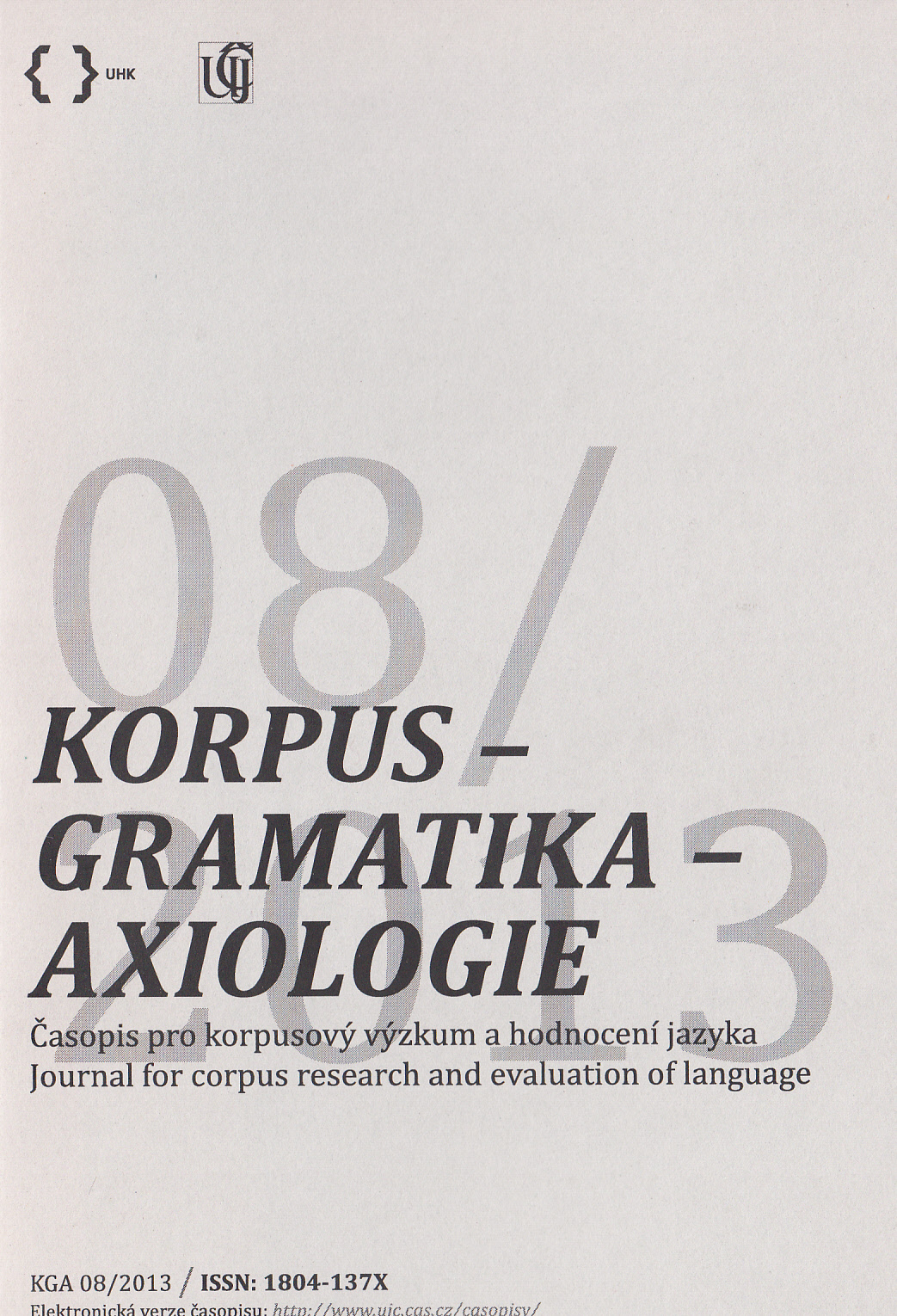Jazyková potencialita: studium na bázi hapaxů legomenon
Language potentiality: A study on the basis of hapax legomen
Author(s): Renata NovotnáSubject(s): Language studies, Language and Literature Studies, Theoretical Linguistics
Published by: AV ČR - Akademie věd České republiky - Ústav pro jazyk český
Keywords: hapax legomenon; potentiality; suffix; dimminutive; feminine noun; compound
Summary/Abstract: The paper deals with word forms occurring in the SYN corpus (1.2 billion words) only once, twice or three times, the so-called hapax legomena, which provide a basis for the study of potentiality in language. As the material was very large, only 20 samples were chosen, each containing 3 000 forms, i. e. 60 000 forms overall. Approximately 50 % of word forms were various mistakes, especially typing errors, or words from other languages. Therefore only the remaining 30 000 word forms were selected as the basis for this study. The analysis showed that the most relevant suffixes for hapax legomena are -ovský (e. g. jimmyreedovský), -ák (e. g. medvěďák), -ista (e. g. havlista), -ing/-ink (e. g. gardening, dancink), -ovitý (e. g. kladivovitý), type po vojensku, diminutives derived from abstracts (e.g. minulůstka) and names of women professions (e. g. meduprodavačka). Moreover, compound words with the first parts dlouho- (e. g. dlouhorožec), gala- (e. g. galamenu), jino- (e. g. jinomluva), kino- (e. g. kinofajnšmekr), mega- (e. g. megakatastrofa), nízko- (e. g. nízkohlučný), polo- (e. g. poločitelný), video- (e. g. videokomentář) were typical for new words.
Journal: Korpus - gramatika - axiologie
- Issue Year: 2013
- Issue No: 8
- Page Range: 47-57
- Page Count: 11
- Language: Czech

